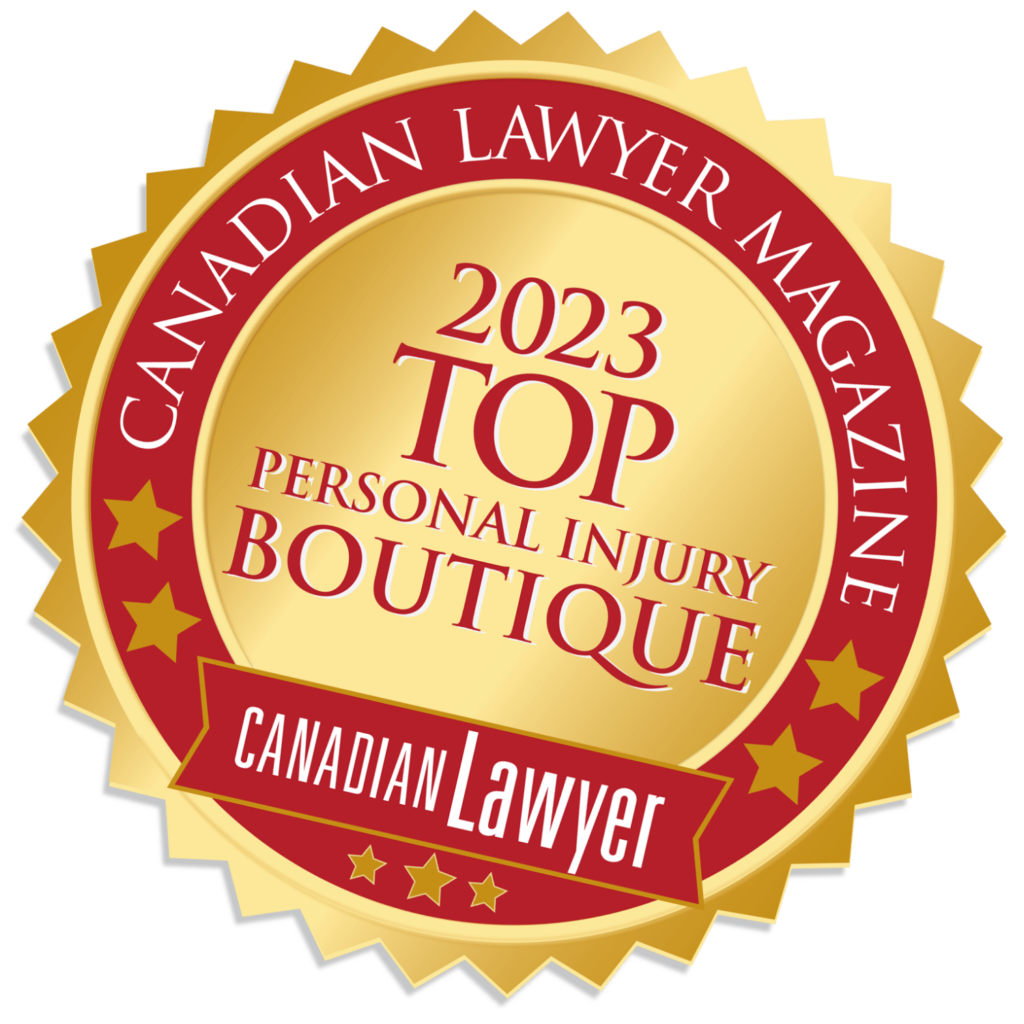
We may not hear about accidents involving buses all that often, but when we do, these are usually traumatic events involving severely injured individuals. In this post, I will discuss the law, safety recommendations and personal injury claim guidance relating to bus accidents.
Highway Traffic Act and Public Vehicles Act
Municipal buses are governed by the Highway Traffic Act and the Public Vehicles Act. The Highway Traffic Act defines a bus as motor vehicle designed for carrying 10 or more passengers that is used to transport people. The Public Vehicles Act provides for passenger rights and driver responsibilities. These include: 1) A bus driver cannot refuse to transport a person who boards at a regular stop and provides the required fare unless all seats on the bus are occupied or there is no standing room, or the person is intoxicated, behaving in a boisterous or disorderly manner or using profane or obscene language. 2) Passengers are permitted to sit in seats or stand in the aisles, but the number of passengers standing in the aisles cannot exceed one-third of the number of seats on the bus.
Safety Recommendations
While taking the bus is typically a safe activity, serious injury may result if the bus is involved in a collision, swerves suddenly, brakes aggressively, or accelerates rapidly. The severity of these injuries may be compounded because there are no seat belts or airbags offering passengers an extra degree of protection. Injuries can also arise when boarding or disembarking from a bus. Below are some simple safety tips to lessen the potential for injury in these circumstances.
Bus Stops: Arrive early at the bus stop so that you are not rushing for the bus at the last minute. If children are accompanying you, ensure that they do not approach the bus until it has stopped. As the bus pulls up to the stop, stand back from the curb. Be wary of the mirrors that protrude from the bus. Make sure that you are visible to the bus driver.
Boarding: Do not approach the bus until it has stopped and the door is open. Permit those passengers who are disembarking from the bus to do so before you board. Use the handrail and watch your step (particularly during rainy, snowy, and icy weather conditions). If you require physical assistance to board the bus, request help from the bus driver. If the bus “kneels”, ensure it is fully lowered before entering.
Travelling: If you are seated, remain seated for the duration of your journey. If you are standing, hold onto a handrail or seat back and place any baggage between your feet. Do not block doorways or aisles and give other passengers sufficient room to pass. Give your seat to elderly, pregnant, or mobility-challenged passengers. Do not place baggage on seats. While the bus is in motion, do not speak to or distract the bus driver. When standing, moving about the bus and even when seated, always hold on to the safety bars.
Disembarking: Use the stop button or pull the stop cord in a timely fashion so the bus driver can stop the bus in a safe manner. Remain in your seat or stand in place until the bus has come to a complete stop. When the bus has stopped, use the handrail and watch your step when you disembark. Once you disembark from the bus, do not attempt to cross the street in front of or behind the bus. Wait until the bus is clear of the bus stop and then proceed to cross the street.
Personal Injury Claim Guidance
If you are a bus passenger who is injured as a result of a bus colliding with another vehicle or attempting to avoid a collision, you may have legal recourse against the municipality (bus owner) and/or the driver of the vehicle who collided with the bus or caused the accident.
An investigation into the bus operation will be undertaken to determine fault for the accident. Some operational factors which may cause or contribute to a bus accident include: fatigued or impaired bus drivers, improperly or insufficiently trained bus drivers, overloaded or improperly loaded buses and poorly maintained bus equipment.
There are four primary sources of critical evidence that will help to support your claim.
- Eye-witness Evidence: other passengers can attest to the nature of the accident, including the movement of the bus, the severity of the collision, and the events that occurred as a result.
- Your Statement: following the accident, you may be interviewed by police officers or transit personnel. It is critical that you provide a clear and accurate account of your accident experience and the injuries you sustained. Do not embellish; try to give a fact-based story. Do not sign any statement if you can avoid it. Only sign the police statement if you are entirely satisfied it is accurate.
- Bus Cameras: some buses are equipped with internal and external cameras. If footage of the accident is available, it will help to corroborate the details of the accident. Your lawyer will request this recorded evidence as part of the discovery process of your claim.
- Investigative: if investigated, obtain a copy of the police report or the transit investigation.
Accident Benefits
Injuries arising from a bus accident can range from whiplash-type soft tissue injuries to traumatic spine and brain injuries. Regardless of the severity of your injury, you will likely be eligible for some accident benefits to support your medical treatment and rehabilitation if the bus is involved in an actual collision. If there is no crash, however, there is no entitlement to accident benefits from any insurer, but you can sue the negligent party in tort.
Conclusion
While legal guidance is important, your health and well-being are paramount. If you are injured in a bus accident, you must seek immediate and appropriate medical attention. Once you receive medical treatment and feel able, your next step is to speak with a lawyer who is experienced with bus accident claims. Our lawyers are experienced with these types of claims.
If you or a loved one has been severely injured or someone you know has been killed in a bus accident and you have questions about the steps mentioned about, please contact personal injury lawyer Michael J. Henry at 416-361-0889 or mjhenry@hshlawyers.com.






